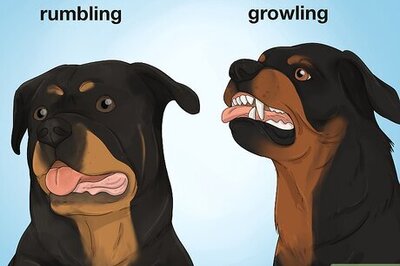
views
WASHINGTON: U.S. consumer spending slowed in August, with a key retail sales gauge unexpectedly declining, as extended unemployment benefits were cut for millions of Americans, offering more evidence that the economic recovery from the COVID-19 recession was faltering.
The report from the Commerce Department on Wednesday could ramp up pressure on the White House and Congress to restart stalled negotiations for another fiscal package. At least 29.6 million people are on unemployment benefits. Consumer spending accounts for more than two-thirds of the U.S. economy and signs of fatigue are likely to grab the attention of Federal Reserve officials as they wrap up a two-day policy meeting.
Retail sales excluding automobiles, gasoline, building materials and food services dipped 0.1% last month after a downwardly revised 0.9% increase in July. These so-called core retail sales, which correspond most closely with the consumer spending component of gross domestic product, were previously reported to have advanced 1.4% in July.
Economists polled by Reuters had forecast core retail sales rising 0.5% in August. Overall retail sales increased 0.6% in August, in part as higher gasoline prices supported receipts at service stations. Data for July was revised down to show retail sales increasing 0.9% instead of 1.2% as previously reported.
U.S. stocks were little changed after the data. The dollar was trading lower against a basket of currencies. U.S Treasury prices were higher.
SLOWDOWN BROADENING
The retail sales report followed data this month suggesting the labor market was losing speed after astounding employment gains in May and June as businesses reopened after being shuttered in mid-March to control the spread of the coronavirus.
Job growth slowed further in August and new applications for unemployment benefits remained perched at extraordinarily high levels in early September. At the same time, manufacturing is also showing signs of tiring, with output slowing last month.
A $600 weekly unemployment subsidy expired in July. It was replaced by a $300 weekly supplement, which was not available in all states, and funds for the program are expected to run out this month. Economists estimated that the reduced unemployment benefits supplement cut income by about $70 billion in August.
Government money was credited for the sharp turnaround in economic activity that started in May. Still, consumer spending is expected to rebound strongly in the third quarter because of robust momentum in core retail sales at the tail end of the April-June quarter.
Consumer spending suffered a record collapse in the second quarter. The pullback in core retail sales in August, if sustained, would set up consumer spending on a slower growth path in the fourth quarter.
The slowdown in spending last month was led by electronics and appliance stores where receipts rose just 0.8% after surging 20.7% in July. Sales at food and beverage stores fell 1.2%. Sporting goods, hobby, musical instrument and book stores receipts dropped 5.7%. Online and mail-order retail sales were flat.
But households bought more motor vehicle, with receipts at auto dealerships rebounding 0.2% after falling 1.0% in July. Sales at furniture stores increased 2.1% and receipts at clothing outlets gained 2.9%. Receipts at restaurants and bars rose 4.7%. Sales at building material stores rebounded 2.0%.
Disclaimer: This post has been auto-published from an agency feed without any modifications to the text and has not been reviewed by an editor

















Comments
0 comment